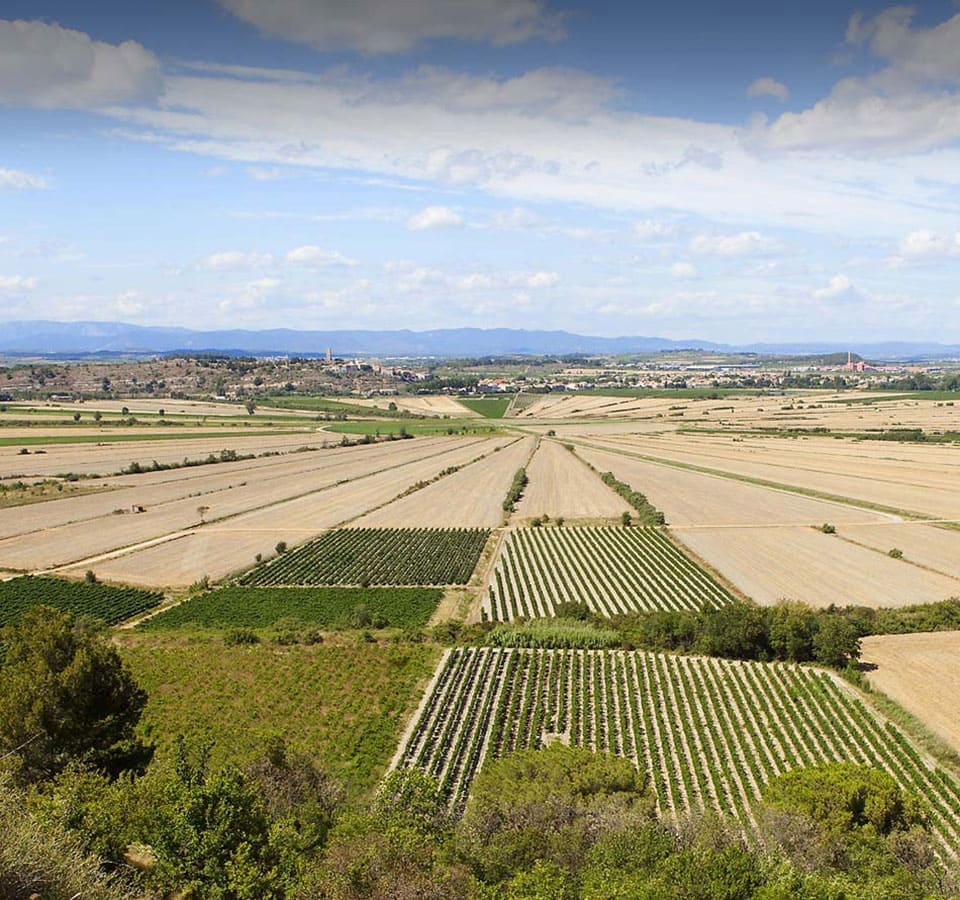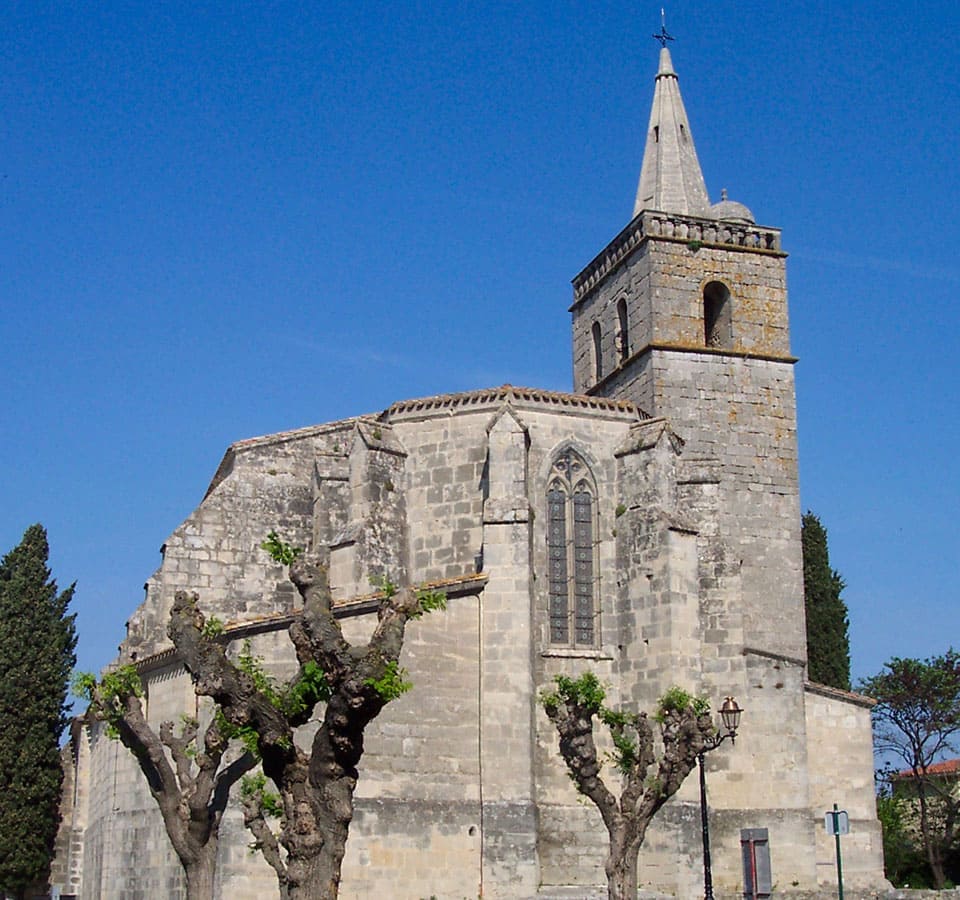



Holiday rental near Narbonne – tourist sites and monuments of the Occitanie region to discover
Nissan lez Ensérune
La Vernède
Tourism

At Nissan lez Ensérune
• Saint-Saturnin church: Gothic church dating from XIIIth and XVIIth centuries, its belltower, its XIVth century statue of the Virgin Mary, Carolingian alter and the Montessier organs from the XIVth century.
• The Notre-Dame Chapel: half-Roman, half-Visigoth, where the Virgin was implored to heal fevers and illnesses.
• The Saint-Christol Chapel: dedicated to Saint-Cristopher (saint of travellers), this Visigothic was restored in 1991.
• The Parish museum: this museum of religious art shows the results of search and excavations in the Giry Abbey, and over 170 objects have been classified.
• "Le Plo", former Medieval Town.
• The Tiquet and the Balaye windmills.
• The Town Hall in the former royal square where the stage and mail coaches stopped.
The Oppidum d'Ensérune
• The Oppidum d'Ensérune is located between Béziers and Narbonne on a hillside overlooking the former dried-up lake of Montady.
Le Somail
• Le Somail is a big hamlet which originally developed as an overnight stop for the postal barges. This magnificent site is very popular and in summer is one of the most animated on the Canal du Midi. The New Bridge, which nontheless dates from 1773, is of remarkable construction in that basalt, sandstone and limestone have all been used together. A visit to the bridge chapel and the museum of hats will complete your visit to Somail. In the vicinity, the medieval village of Mirepeisset is worth the detour.


At Nissan lez Ensérune
• Saint-Saturnin church: Gothic church dating from XIIIth and XVIIth centuries, its belltower, its XIVth century statue of the Virgin Mary, Carolingian alter and the Montessier organs from the XIVth century.
• The Notre-Dame Chapel: half-Roman, half-Visigoth, where the Virgin was implored to heal fevers and illnesses.
• The Saint-Christol Chapel: dedicated to Saint-Cristopher (saint of travellers), this Visigothic was restored in 1991.
• The Parish museum: this museum of religious art shows the results of search and excavations in the Giry Abbey, and over 170 objects have been classified.
• "Le Plo", former Medieval Town.
• The Tiquet and the Balaye windmills.
• The Town Hall in the former royal square where the stage and mail coaches stopped.

The Oppidum d'Ensérune
• The Oppidum d'Ensérune is located between Béziers and Narbonne on a hillside overlooking the former dried-up lake of Montady.
Le Somail
• Le Somail is a big hamlet which originally developed as an overnight stop for the postal barges. This magnificent site is very popular and in summer is one of the most animated on the Canal du Midi. The New Bridge, which nontheless dates from 1773, is of remarkable construction in that basalt, sandstone and limestone have all been used together. A visit to the bridge chapel and the museum of hats will complete your visit to Somail. In the vicinity, the medieval village of Mirepeisset is worth the detour.
Around Narbonne
Close by :
• The Lapidaire museum;
• The Horreum, former roman warehouse;
• Saint Sébastien Church (XVth century);
• Saint-Paul-Serge basilica;
• The birthplace of Charles Trénet;
• The canal de la Robine and the Merchants bridge;
• The Market Hall (1900), one of the most beautiful markets in France.
• Walks on the Canal de la Robine and the Canal du Midi from Narbonne towards Port la Nouvelle or towards Somail ;
• Hire of electric powered boats on the Canal de la Robine.• In July, National festival of amatuer dramatics.• In August, Via Mercaderia, medieval reconstitution and the festival of commerce, wine and regional products.
• Festival of Sainte Cécile in November.
Informations :
Office du Tourisme
Place Roger Salengro
11100 Narbonne.
Phone: +33 0 (4) 68 65 15 60
https://www.narbonne-tourisme.com/


Narbonne
Town of art and histoire, capital of the "provincia" in roman times, crossed by the Canal de la Robine; town in flower.
To see :
• Around the Place of the Town Hall with its elevations revamped by Viollet-le-Duc (XIXth century), the whole constitutes the Archbishops Palace and the Basilica.
• The Archbishops Palace: the l’Ancre passage, the interior courtyard of la Madeleine, the Gilles Aycelin dungeon (XIIIth century), the Archaeological museum;
• The museum of art and history, the former Archbishops apartments house collections of French, Flemish, Italian paintings from XVIth to XIXth century;
• In front of the Town Hall the remains of the Via Domitia.
• In the Saint-Just-et-Saint-Pasteur basilica with its flamboyant gothic styling, exhibition on the Great Alter.
Informations :
Office du Tourisme
Place Roger Salengro
11100 Narbonne.
Téléphone : +33 0 (4) 68 65 15 60
https://www.narbonne-tourisme.com/

Around Narbonne
Close by :
• The Lapidaire museum;
• The Horreum, former roman warehouse;
• Saint Sébastien Church (XVth century);
• Saint-Paul-Serge basilica;
• The birthplace of Charles Trénet;
• The canal de la Robine and the Merchants bridge;
• The Market Hall (1900), one of the most beautiful markets in France.
• Walks on the Canal de la Robine and the Canal du Midi from Narbonne towards Port la Nouvelle or towards Somail ;
• Hire of electric powered boats on the Canal de la Robine.• In July, National festival of amatuer dramatics.• In August, Via Mercaderia, medieval reconstitution and the festival of commerce, wine and regional products.
• Festival of Sainte Cécile in November.
Informations :
Office du Tourisme
Place Roger Salengro
11100 Narbonne.
Phone: +33 0 (4) 68 65 15 60
https://www.narbonne-tourisme.com/

Narbonne
Town of art and histoire, capital of the "provincia" in roman times, crossed by the Canal de la Robine; town in flower.
To see :
• Around the Place of the Town Hall with its elevations revamped by Viollet-le-Duc (XIXth century), the whole constitutes the Archbishops Palace and the Basilica.
• The Archbishops Palace: the l’Ancre passage, the interior courtyard of la Madeleine, the Gilles Aycelin dungeon (XIIIth century), the Archaeological museum;
• The museum of art and history, the former Archbishops apartments house collections of French, Flemish, Italian paintings from XVIth to XIXth century;
• In front of the Town Hall the remains of the Via Domitia.
• In the Saint-Just-et-Saint-Pasteur basilica with its flamboyant gothic styling, exhibition on the Great Alter.
Informations :
Office du Tourisme
Place Roger Salengro
11100 Narbonne.
Téléphone : +33 0 (4) 68 65 15 60
https://www.narbonne-tourisme.com/

Around Béziers
• Fontcaude Abbey, roman shrine in the garrigue scrublands where the choir and the trancept still exist, the remaining external walls of the religious community buildings; sculpted column capitals, museum.
• 18 hole golf coursez at Saint Thomas.
• At Villeneuve-les-Béziers, Saint Etienne roman Church (XIth century) the bell tower, the château tower, the remparts.
• At Murviel-les-Béziers, the streets mounting to the château terraces and the church (XVth century).
• At Cessenon sur Orb, tower, church (XIVth century) and farm zoo with 50 types of farm and ornamental animal species.
• At Roujan,Cassan Abbey, Royal Priory dating from XIIth century.
Around Narbonne
• Fontfroide Abbey : https://www.fontfroide.com
• At Coursan, gothic Church and lookout tower (XIIth century) also belltower, the bridge over the river Aude (XVIth century).
• At Sallèles d'Aude, countryside holiday resort on the canal linking the river Aude and la Robine, worth seeing: Amphoralis, the museum of Gallo-Roman pottery and archaeological site; Sallèles museum of the old town and trades of yesterday.
In August, pottery market. Cuxac d’Aude, on the right bank of the river.
• Ouveillan, medieval village, roman church and the Cistercian barn at Fontcalvy (historical re-enactments in summer); in October, traditional grape harvest festival.
• Bages, 5 km from Narbonne. This fishing village is built on a rocky promentary which dominates the lagoon. To see: the Saint Martin church (XIIIth century), the ramparts, the ancient fortified entry gate and the sundial (1725), the steeply climbing streets.


Around Béziers
• Fontcaude Abbey, roman shrine in the garrigue scrublands where the choir and the trancept still exist, the remaining external walls of the religious community buildings; sculpted column capitals, museum.
• 18 hole golf coursez at Saint Thomas.
• At Villeneuve-les-Béziers, Saint Etienne roman Church (XIth century) the bell tower, the château tower, the remparts.
• At Murviel-les-Béziers, the streets mounting to the château terraces and the church (XVth century).
• At Cessenon sur Orb, tower, church (XIVth century) and farm zoo with 50 types of farm and ornamental animal species.
• At Roujan,Cassan Abbey, Royal Priory dating from XIIth century.

Around Narbonne
• Fontfroide Abbey : https://www.fontfroide.com
• At Coursan, gothic Church and lookout tower (XIIth century) also belltower, the bridge over the river Aude (XVIth century).
• At Sallèles d'Aude, countryside holiday resort on the canal linking the river Aude and la Robine, worth seeing: Amphoralis, the museum of Gallo-Roman pottery and archaeological site; Sallèles museum of the old town and trades of yesterday.
In August, pottery market. Cuxac d’Aude, on the right bank of the river.
• Ouveillan, medieval village, roman church and the Cistercian barn at Fontcalvy (historical re-enactments in summer); in October, traditional grape harvest festival.
• Bages, 5 km from Narbonne. This fishing village is built on a rocky promentary which dominates the lagoon. To see: the Saint Martin church (XIIIth century), the ramparts, the ancient fortified entry gate and the sundial (1725), the steeply climbing streets.
Tourism
The Seaside Resorts
This is the country of saltworkers, of fensmen and of bull breeders.
Sète and Palavas regularly celebrate nautical jousting tournaments.
Fishing governs the rhythm of local life in the ports, from Grau-du-Roi as far as the Vermeille Coast.
This coastal plain proudly exibits a unique lagoon landscape, the kingdom of pink flamingoes, egrets and herons where the faun and abundant are in perfect harmony. The blue flag flies over almost 40 beaches and harbours in Languedoc.
At Cap d’Agde, as further west, near the Clape massif with its scented pinewoods populated with cigales, Gruissan and Leucate are paradise for thrill seeking windsurfer lovers.



